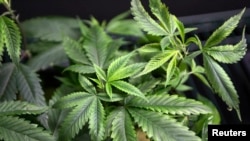As attitudes about marijuana change in the United States, more adults are using the drug, according to a new study.
Researchers at the National Institute on Drug Abuse, National Institutes of Health, writing in The Lancet Psychiatry, say that as more states legalize recreational and medical use of marijuana, fewer adults feel there are dangers associated with its use.
Using data from nearly 600,000 adults over the age of 18, the researchers found that from 2002 to 2014 marijuana use increased from 10.4 percent of adults in 2002 to 13.3 percent in 2014. Usage was defined as having consumed marijuana in the previous year.
The study also found that adults reporting using marijuana for the first time in the previous year also rose from .7 percent in 2002 to 1.1 percent in 2014. Additionally, those reporting daily or near daily use jumped from 1.9 percent to 3.5 percent over the same time period.
Extrapolating this data, researchers say, means that 823,000 adults reported first using marijuana in 2002 compared to 1.4 million in 2014. They estimate that during the same time period the overall number of marijuana users jumped from 21.9 million to 31.9 million. The number of daily or near daily users was 8.4 million in 2014, up 3.9 million from 2002.
These increases, researchers say, are being driven by a decline in the number of people who perceive marijuana as dangerous. For example the percentage of people who felt that smoking marijuana once or twice a week was dangerous fell from 50.4 percent to 33.3 percent.
"Although shifts in perceived risk have historically been important predictors of adolescent marijuana trends, no previous research has examined this relationship in adults,” said study author Dr Wilson M. Compton of the National Institute on Drug Abuse at the National Institutes of Health. “State laws related to marijuana use in the U.S.A. have changed considerably over the past 20 years with medical marijuana now legalized in 25 states and the District of Columbia. Additionally, several jurisdictions have legalized non-medical marijuana use."
Despite the rise in number of adults using marijuana, the researchers say did not see a corresponding rise in “marijuana use disorders” such as abuse or dependence, though they add more study is needed to confirm the trend.
"Understanding patterns of marijuana use and dependence, and how these have changed over time is essential for policy makers who continue to consider whether and how to modify laws related to marijuana and for health-care practitioners who care for patients using marijuana,” said Compton. “Perceived risk of marijuana use is associated with high frequency of use suggesting the potential value for modifying risk perceptions of marijuana use in adults through effective education and prevention messages."








